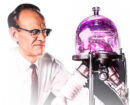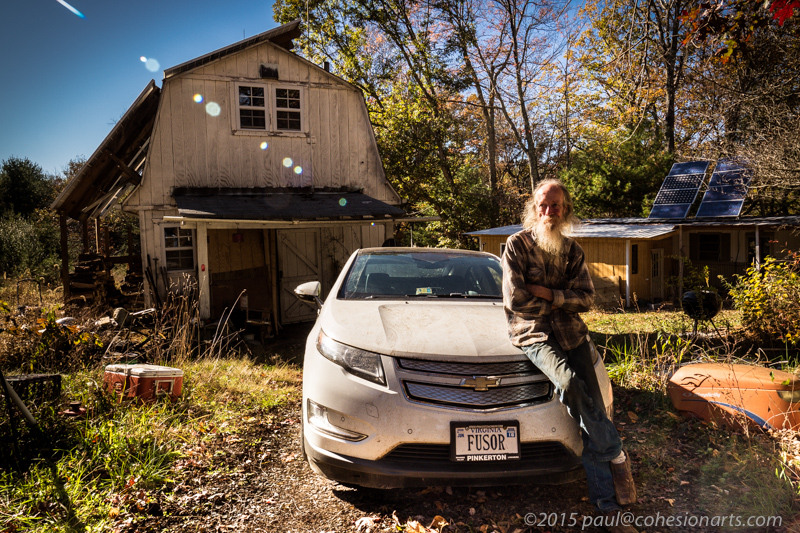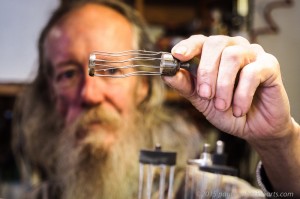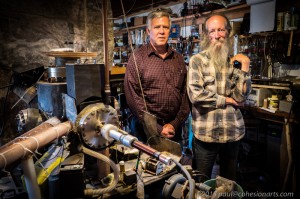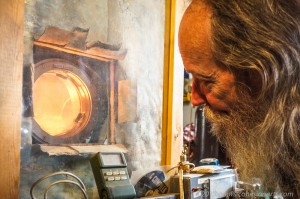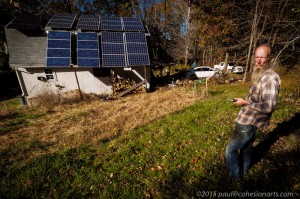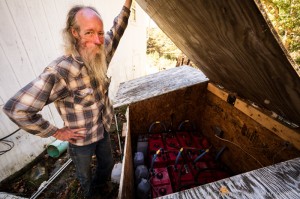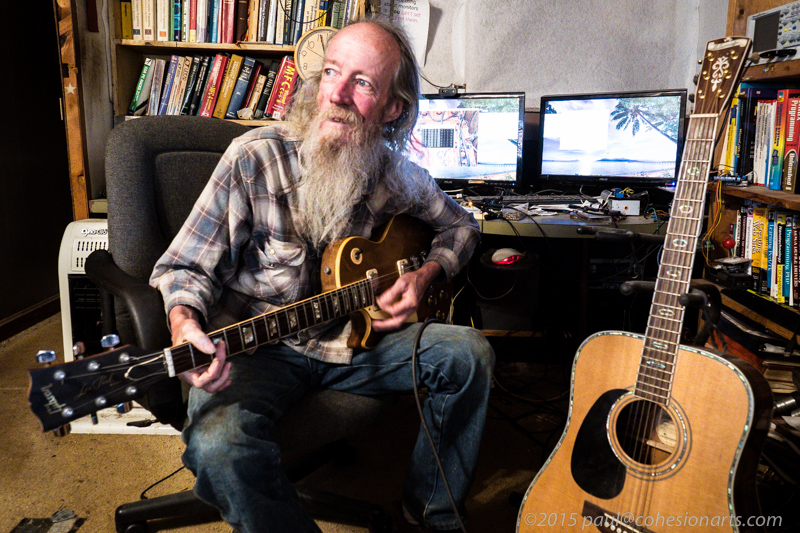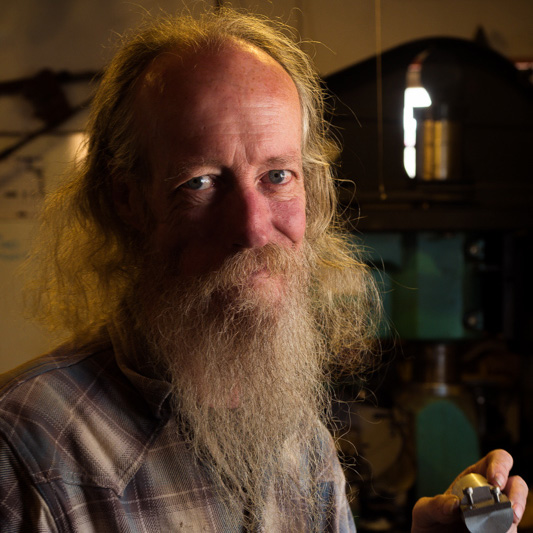Last week I drove back up to Virginia (I was in Richmond for HEAS earlier in the month) to spend a day with Doug Coulter.
I’ve known of Doug for several years, and have occasionally looked in on his website, where he has made a concerted effort to focus and elevate the “open source” discussion of fusion above the noise that has become an issue for the Fusor.net fora of late.
Doug showed up on my radar again just before HEAS, after I posted this appeal to the Fusor community to, well, get serious about this line of inquiry. Shortly after that post, I got a message from one of the regular visitors to the site to “have a talk with Bill Fain (another Fusor/HEAS regular) when you get there about Doug…”
At HEAS, I did talk to Bill, who, it turns out, has been working closely with Doug for quite some time on his fusor project, which Doug has been building for several years on his solar-powered, off-the-grid “homestead in the foothills of the Blue Ridge Mountains near Floyd, Virginia. And what Bill told me got me as fired up about this topic as anything I’ve heard since it first got my attention more than forty years ago.
After talking to Bill I visited Doug’s website, where he has been entirely forthcoming about some recent experiments (if somewhat and understandably circumspect about the techniques involved):
….we made a ginormous breakthrough, actually. We are at approximately 100 billion neutrons/second with under 100w input.
100 billion neutrons/second?? Whoa! Jump back (literally and figuratively)!
When I read that, I had to get out a pencil and count the zeros. “100 billion” is 10^11. For comparisons sake, the most advanced “amateur” fusors – like the one Richard Hull operates in the laboratory behind his house – max out at between one and two million n/s, or 10^6. If Doug’s numbers are accurate, that means he’s improved the performance of his fusor by not one, not two, but FIVE full orders of magnitude.
If verifiable, this is easily the most impressive output any fusor has demonstrated since the days of the “Prime 2” at the Farnsworth labs in Fort Wayne, Indiana in the 1960s. If memory serves me (I’m going to have to dig into some archives here), Gene Meeks told us the Prime 2 made it it to 10^12 by burning a deuterium/tritium fuel mix. They thought they would breakeven somewhere in the neighborhood of 10^14 (that would be tens-of-trillions of neutrons/sec).
If indeed Doug Coulter’s fusor is producing 10^11 on a strictly d-d (deuterium+deuterium) diet, then, well, yeah, that would indeed be some kind of “ginormous breakthrough.”
But there is danger in them that neutrons…
A couple hundred mW out for <100W in I think puts me at the Q record for all approaches for all time, though, and that feels pretty good (once I got over the rad sickness).
Doug’s almost casual reference to ‘rad sickness’ is both a marker and a warning.
Once a fusor starts generating thet kind of neutron flux that Doug is reporting, it becomes rather, well, dangerous – if not downright lethal. As Doug reports, the output was a surprise that he was not fully prepared for, and the consequences were dire:
…[at] that level of output … I can’t be in the room with [the fusor] for even a few seconds (as I found out the very hard way, and it took awhile to recover from)…
…I’m pretty much of a cowboy and don’t care about spurious “safety” fears, but that was a real eye opener…not to mention the amount of puke I had to dispose of. No more of that, now we go “by the book” on rad safety, which takes what it takes.
Now Doug is embarked on a project to create a remote-control facility for the fusor, so that he can operate it and monitor the results from a safer(r?) distance. “I’m simply moving across my campus to a safe distance and letting the air and inverse square law…” provide the necessary shielding.
– – – – –
As you can see from the photo that opens this post, Doug lives on a property in the foothills of the Blue Ridge Mountains he calls his “homestead.” He lives “off the grid – generating all the power he needs for both his personal life and his experiments from the solar arrays and batteries on the property. In other words, he’s using the energy of that star 93-million miles away to generate an artificial star here on Earth.
The visit reminded me a lot of the times I spent in the remote confines of Bolinas, CA in the late 1970s with Philo T. Farnsworth III and his family. As it often was with Philo III, In the presence of a sprawling, rapidly-firing intellect, it can be hard sometimes to get a word in edgewise. And it was hard sometimes to keep up with his resume, which includes nearly 40 years of working in a variety of high-tech, software and hardware engineering projects.
For example, here’s Doug showing me the prototype for MusiCad – one of the very earliest digital audio processing boards. He said that some of the software he wrote can still the found in the kernel of modern DAWs (Digital Audio Workstations):
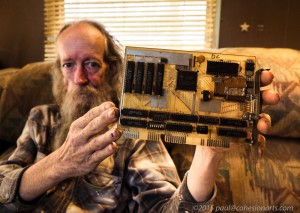
It became apparent early on that Doug and I are on the same wavelength on many aspects of this work – most notably the need to keep it as “open source” as possible.
Unfortunately, as Doug laments, recent “reforms” in US patent law complicate that altruistic objective:
I had been using this website and making it all open source to give me “first to invent” status, recorded and time-stamped by an uninterested 3rd party – I have to patent this to give it away(!).
But recent changes in patent laws, and events here have made me have to shut up till the patent is filed and perhaps granted.
First to invent no longer is the law – it’s now first to file. That means someone else can steal it, patent it, monopolize it – admit they did – and still own it legally and rip off the world.
So he’s not dead in the water by any stretch, but the machinations of patent law mean it will be a while before we’ll know what secret he has discovered. But not surprisingly,
It’s jaw droppingly elegant and all standard model too…just not obvious till you’ve seen it.
Isn’t that what Schopenaeur said?
Anyway, a few more photos from my day at the Solar Powered Fusor Homestead:
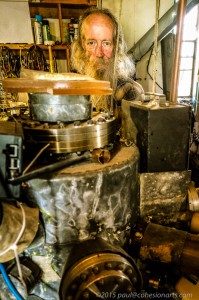
Here’s Doug with his fusor. Unlike most of the fusors built from the specs on this site – which are built with a spherical reaction chamber – this one uses a cylindrical chamber. And it’s harder to discern the components, because everything is sheathed in a layer of lead:
Since the fusor adheres to a cylindrical architecture, the cathode grid also adheres to a cylindrical design (which makes for a cool, glowing-thread-like poissor). Sometimes things get a little too warm in the chamber, which melts the grids:
“This is why we we no longer use titanium for grid parts,” Doug said, “and no longer have heat problems.” He is fabricating his grids from tungsten and graphite now.
One of Doug’s partners in this project is Bill Fain, who has been instrumental in rounding up (aka “scrounging” in fusioneer vernacular) many of the parts and components that Doug has built into this fusor. I think the reactor chamber started life as part of an electron microscope…
And here is the obligatory photo of the inventor peering through the “view port” of his invention, his visage bathed in the warm glow of the bake-out light within:
Back outside, we survey the landscape of Doug’s solar-powered homestead. Here’s the laboratory/shed and the primary solar array:
The second floor of the shed served as Doug’s living accommodations “until the breakthrough and the desire for a slightly more normal life moved me out… my bed and kitchen were right over the fusor…”
Elsewhere on the property, this structure serves as Doug’s residence; he’s building a newer annex for his personal accommodations, the rest of the space will be dedicated to the Fusor Remote-Control Room:
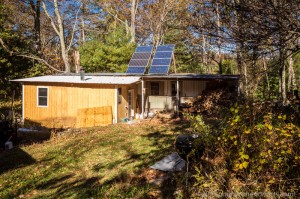
All the power Doug needs to run his property and his lab are generated by these solar panels. The output from the solar panels gets stored in this battery box:
Inside, seated at the workstation… eventually there will be at least four displays to monitor different aspects of the fusor operation, including a 42″ LG panel that arrived via UPS from Amazon the day I was there:
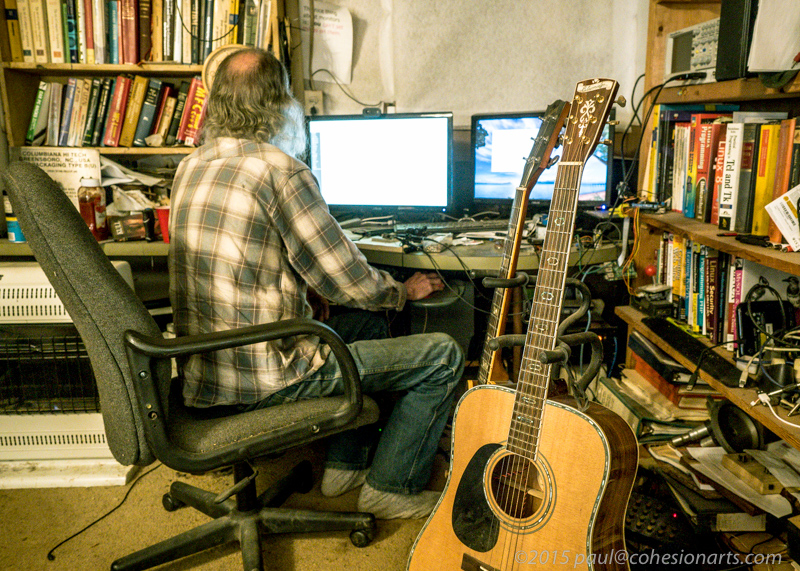
I think Doug might be happiest when he’s playing music, though when he plays guitar he insists, “I’m a drummer!”
There is sure to be a lot of skepticism among the fusion cognoscenti about the results that Doug Coulter is reporting. It is unfortunate that he will not be able to replicate his own experiments until he has finished the considerable task of automating the fusor operations and then working the bugs out of those systems.
Doug understands that there will be a lot of questions until he can replicate – and accurately record and document – the results that he is tentatively reporting. In an e-mail exchange after our visit, he told me:
Heck, even I’m not sure of my numbers – they are estimates, though they are “scientific wild-ass guesses” – based on activated materials in my shop and the level of rad sickness -v- time of exposure. It’s in the range, I’m pretty sure, but can’t prove it just now (unless someone else wants to run it and die shortly thereafter). I will, though. It repeats nicely. I just kind of doubt that I hit the sweet spot by accident – I think there’s more in there.
It is perhaps even more unfortunate that the present structure of patent law precludes any public disclosure of whatever ‘magic’ he’s discovered before the necessary paperwork has been filed. Until then it will not be possible for others to experiment with those techniques. If it were not for those changes in the patent process, he could tell us what he’s up to, and others in the fusor community would be at liberty to attempt to replicate those results.
In the meantime, there is no point in doubting the method to his madness. It’s clear from spending a day with Doug Coulter that he has created an environment that is conducive to thinking ‘outside the chamber’ of most fusion/fusor research. That ability to investigate the unexpected has produced what he likes to call his “Fleming moments” – an allusion Alexander Fleming and the almost (?) accidental discovery of penicillin.
Whether or not Doug Coulter’s work can have the sort of impact on civilization that the original “Fleming moment” produced will have to wait for complex engineering – and an arcane patent process – to run their course.
